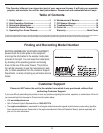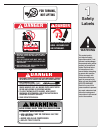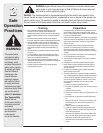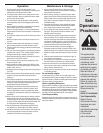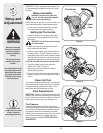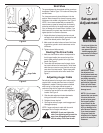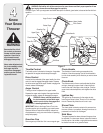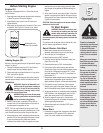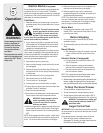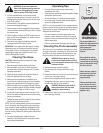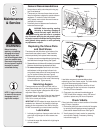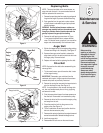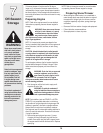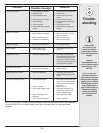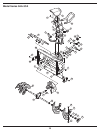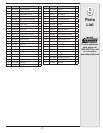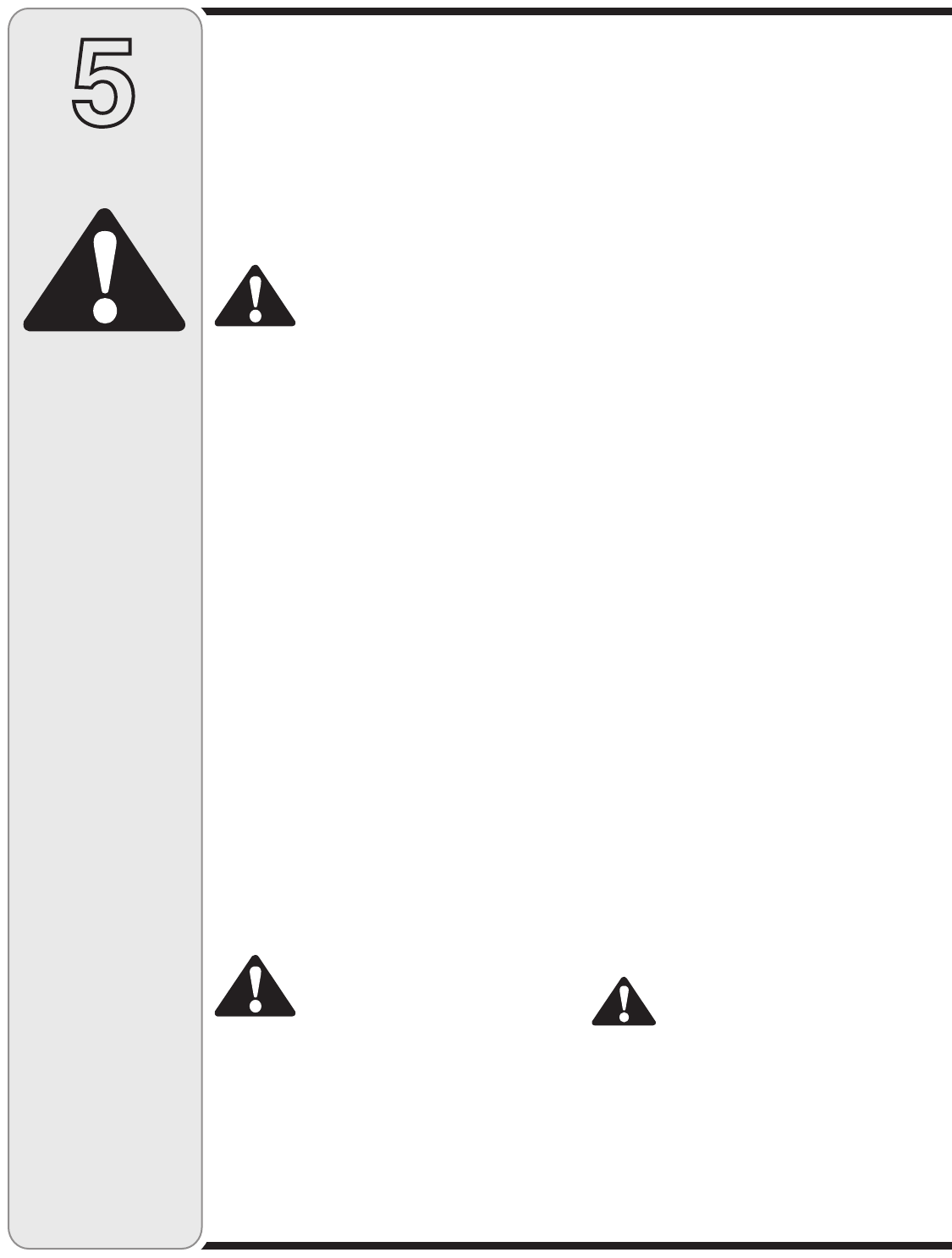
10
5
Operation
Severe damage to electric
starter (if equipped) is
possible if you continue
to crank for more than
five seconds without a
cool-down.
The temperature of muffler
and the surrounding areas
may exceed 150˚F. Avoid
these areas.
WARNING
Electric Starter(if equipped)
Some models of the snow thrower may be equipped with
an optional 120 volt A.C. electric starter. This electric
starter, with a three-wire power cord and plug, is designed
to operate on a 120 volt AC household current. Follow the
steps below to use the electric starter.
Cold Start:
1. Determine whether your house wiring is a three-wire
grounded system. Ask a licensed electrician if you are
not certain.
WARNING: The electric starter must be
properly grounded at all times to avoid
the possibility of electric shock to the
operator. If your house wiring system
is not a three-wire grounded system, do not use this
electric starter under any conditions.
2. If your house wiring system is grounded and a three-
hole receptacle is not available at the point the snow
thrower starter will normally be used, one should be
installed by a licensed electrician.
NOTE: When connecting the power cord, always connect
cord to starter on engine first, then plug the other end into
a three-hole grounded 120 Volt receptacle. When discon-
necting the power cord, always unplug the end from the
three-hole, grounded receptacle first.
3. Attach spark plug wire to spark plug.
4. Make sure that the auger control and the drive control
are disengaged.
5. Remove the keys from the plastic bag. Push key into
the ignition slot. Do not turn the key. Keep second key
in a safe place.
6. Move the choke knob to FULL choke position.
7. Move throttle control to the FAST position.
8. Turn fuel valve on, if so equipped.
9. Connect power cord to the switch box on engine.
10. Plug the other end of the power cord into a three-hole,
grounded 120 volt AC receptacle.
11. Push primer button three times.
12. Push down on the starter button until the engine starts.
Do not crank for more than five seconds at a time.
WARNING: Severe damage to electric
starter is possible if you continue
to crank for more than five seconds
without a cool-down.
13. When the engine starts, release the starter button and
slowly rotate the choke to OFF position. If the engine
falters, rotate the choke to FULL and then gradually to
OFF.
NOTE: When engaging the electric starter, a slight hesita-
tion of a few seconds may occur before the engine starts
to turn. This is normal and is not harmful to the engine.
14. Disconnect the power cord from the receptacle first
and then from the switch box on the engine.
15. Allow the engine to warm up for a few minutes
because the engine will not develop full power until it
reaches operating temperature.
NOTE: If the starter motor runs but the engine does not
turn over, the starter gear may have frozen. Place the
snow thrower in a warmer part of the garage or storage
shed till the gear is free of the accumulated ice.
Warm Start:
1. If restarting a warm engine, rotate choke to OFF
instead of FULL and press the starter button. Do not
push the primer button.
Before Stopping
1. Run engine for a few minutes to help dry off any
moisture on engine.
2. To avoid possible freeze-up of the starter, follow these
steps:
Recoil Starter
a. With the engine running, pull the starter rope with
a rapid, continuous full arm stroke three or four
times.
Electric Starter (if equipped)
a. Connect power cord to switch box, then to 120
Volt AC receptacle.
b. While the engine is running, push the starter
button and spin the starter for several seconds.
c. Disconnect power cord from the receptacle first,
then from the snow thrower.
NOTE: The unusual sound from pulling the starter rope or
from spinning the starter will not harm the engine.
3. While standing in the operator’s position (behind the snow
thrower), engage the auger control for a few seconds to
clear any remaining snow and ice from the chute assembly.
To Stop The Snow Thrower
1. To stop the wheels, release the drive control.
2. To stop throwing snow, release the auger control.
3. To stop engine, push throttle control lever to OFF or
pull out the key(either method works). Do not turn key.
WARNING: The temperature of muffler and
the surrounding areas may exceed 150º F.
Avoid these areas
Auger Control Test
IMPORTANT: Perform the following test before operating
the snow thrower for the first time and at the start of each
winter season.
Check the adjustment of the auger control as follows:
1. When the auger control is released and in the
disengaged “up” position, the cable should have very
little slack, but should NOT be tight.



